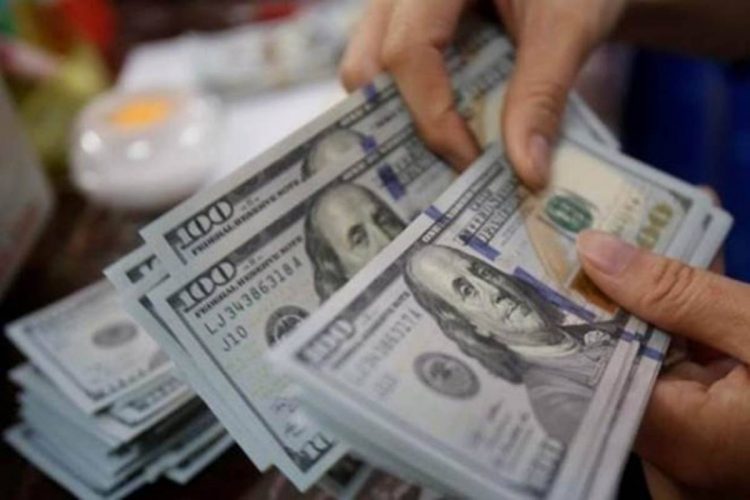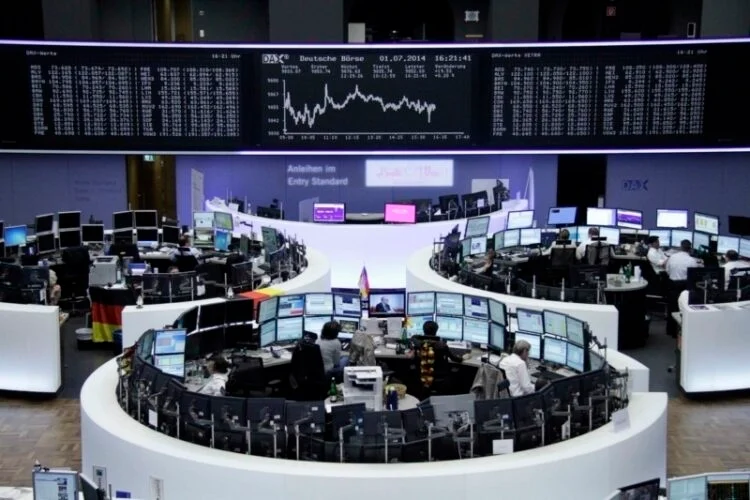Publisher: Maaal International Media Company
License: 465734
Amidst strong dollar .. Global economy in the eye of storm
The strong dollar has caused chaos in food imports around the world, as it has burdened populations from Africa to Asia in terms of its high costs, as the International Monetary Fund warns of disaster, and the World Food Program says it is the largest food crisis in modern history. .
Strong Dollar Policy: This is US economic policy based on the assumption that a strong US dollar exchange rate is in the interest of the United States and the world as a whole. He is said to be driven by a desire to encourage foreign stockholders to buy more Treasuries.
food crisis:
اقرأ المزيد
Food importers from Africa to Asia are scrambling for dollars to pay their bills, as the appreciation of the US currency drives up prices in countries already facing a historic global food crisis.
In Ghana, importers are warning of shortages in the lead-up to Christmas. Thousands of containers loaded with food have recently accumulated in the ports of Pakistan, while private bakeries in Egypt raised the prices of bread after some flour mills ran out of wheat.
Find solutions:
For his part, a recent report in “Fortune” magazine indicates that the appropriate response is to allow the exchange rate to adjust, while using monetary policy to keep inflation close to its target.
Higher prices for imported goods will help adjust the fundamental shocks as they reduce imports, which in turn helps reduce the accumulation of external debt. Fiscal policy should be used to support the most vulnerable without jeopardizing inflation goals, according to the report.
Across the world, countries that depend on food imports are struggling with a combination of harsh factors including high interest rates, a rising dollar and rising commodity prices, eroding their ability to pay for goods that are usually priced in dollars. Dwindling foreign currency reserves in many cases reduced access to dollars, and banks were slow to disburse payments.
They can’t pay for it, they can’t pay for these goods,” says Alex Sanvilio, head of global trade at crop giant Cargill. He added: “This is happening in many parts of the world.
The report considered that the problem is not new for many countries – and is not limited to agricultural commodities – but declining purchasing power and a shortage of dollars are exacerbating broader pressures across global food systems in the wake of the Russian invasion of Ukraine.
For its part, the International Monetary Fund warned of a disaster no less serious as the food emergency in 2007-08, while US Treasury Secretary Janet Yellen called for more food aid to be provided to the most vulnerable groups, while the World Food Program said that the world faces the largest A food crisis for him in modern history.
On the ground, many importers suffer from rising costs, shrinking capital and difficulty obtaining dollars to ensure their shipments are released from customs on time. This means that shipments are disrupted at ports or may be diverted to other destinations. “There has always been historical pressure to make these payments, but right now the pressure is unbearable,” said Ted George, a consultant specializing in Africa and commodity markets.
Shortage of supplies:
In Ghana, where the cedi has lost about 44% this year against the dollar – making it the second-worst-performing currency in the world – there are already concerns about supplies ahead of Christmas.
“We think there will be a shortage of some foodstuffs,” said Samson Asaki Owengopet, executive secretary of the Ghana Importers and Exporters Association, which includes buyers of grain, flour and rice. “The dollar is swallowing my master and we are in a hopeless situation.”
Undoubtedly, some countries may be backed by their purchases in other currencies such as the euro, while energy-exporting countries will benefit from external revenues. Global food commodity costs have also fallen for six consecutive months, giving hopes of relief to consumers. But a stronger dollar threatens to erode some of those benefits, according to Monica Tuthova, an economist with the Food and Agriculture Organization of the United Nations, who sees this year’s global food import bill at a record high.
fragile situations:
According to the report, the situation remains fragile. Concerns are rising again about supplies from the Black Sea region as the war in Ukraine escalates and there are questions about the future of grain shipments from Ukrainian ports. Climate shocks have led to volatility in recent months, low stocks and skyrocketing fertilizer and energy prices are increasing food production costs. The International Monetary Fund said in its global outlook this week, as the Federal Reserve continues to tighten monetary policy, the dollar’s strength against currencies in emerging and developing markets will increase inflation and debt pressures.
In flood-stricken Pakistan, government moves to block foreign exchange outflows led to containers of food such as chickpeas and other pulses being piled up at ports last month, driving up prices, according to Muzammil Rauf Chabal, president of the Grain Association. in Pakistan.
The situation calmed down after the appointment of the new Finance Minister who pledged to clear the pending transactions of companies that were delayed due to the shortage of dollars in their interbank market. “The situation is very serious,” said Chabal, whose company is the country’s largest private importer of wheat. “We were expecting the country to face a serious grain crisis.”
In Egypt, one of the world’s largest importers of wheat, a shortage has hit private mills that provide flour for bread that is not part of the country’s subsidy programme.
About 80% of mills ran out of wheat and stopped working as about 700,000 tons of grain are still stuck in the country’s ports since the beginning of last month, according to the Chamber of Grain Industry. The Ministry of Supply said, on Wednesday, that it would provide wheat and flour to private sector mills and pasta factories
Cargill’s Sanvilio said he expects global wheat trade flows to shrink by up to 6% in the coming months, with corn and soybean flows down as much as 3%, as developing countries struggle to pay for food and animal feed.
In Bangladesh, the industrial and commercial giant Meghna Group may have to reduce the amount of wheat it was planning to import before the war broke out amid a jump of at least 20% in wheat import costs due to the rise in the dollar, said Taslim Shahryar, the company’s procurement official. .
Shahryar said currency fluctuations are causing huge losses for the company. “We have never seen this before.”
Economic repercussions:
For its part, the International Monetary Fund says that the dollar has reached its highest level since 2000, having risen by 22% against the yen, 13% against the euro and 6% against emerging market currencies since the beginning of this year. Such a sharp appreciation in the value of the dollar in a matter of months has major macroeconomic implications for almost all countries, given the dollar’s dominance over international trade and finance.
He pointed out that while the share of the United States in global merchandise exports has decreased from 12% to 8% since 2000, the dollar’s share in global exports has retained around 40%.
For many countries struggling to bring down inflation, the weakness of their currencies relative to the dollar has made the fight even more difficult. in the middle. These pressures are particularly acute in emerging markets, reflecting their increased dependence on imports and their greater share of imports in dollars compared to advanced economies.
Under these circumstances, should countries actively support their currencies? Many countries resort to foreign exchange interventions. Total foreign reserves held by emerging market and developing economies declined by more than 6% in the first seven months of this year.
The IMF believes that the situation requires an appropriate response to the pressures of consumption, especially focusing on the drivers of exchange rate change and on indicators of market turmoil. Specifically, exchange-rate intervention should not be a substitute for a justifiable adjustment of macroeconomic policies. There is a role for intervention on a temporary basis when currency movements significantly increase financial stability risks and/or significantly disrupt the central bank’s ability to maintain price stability, according to the IMF.








